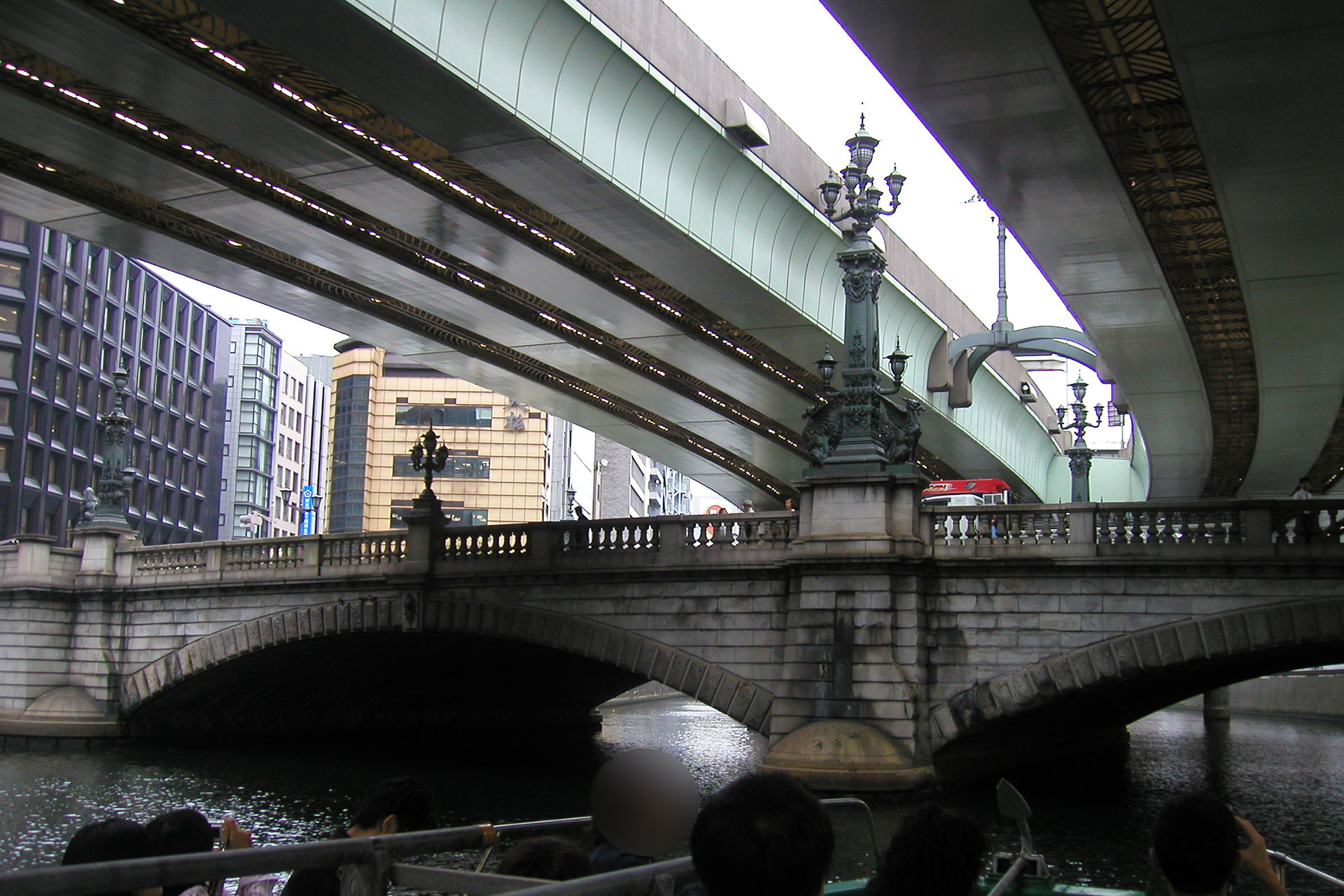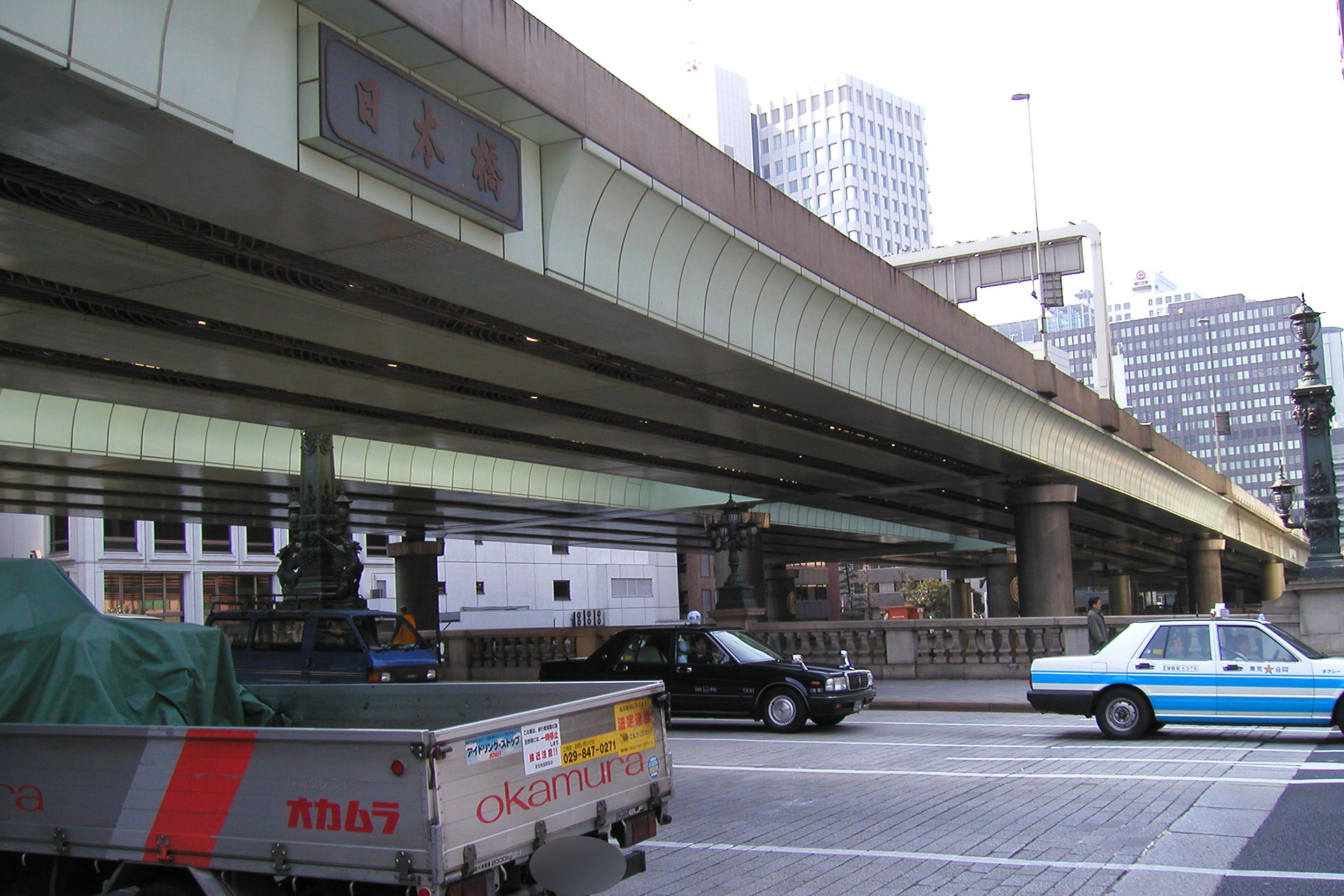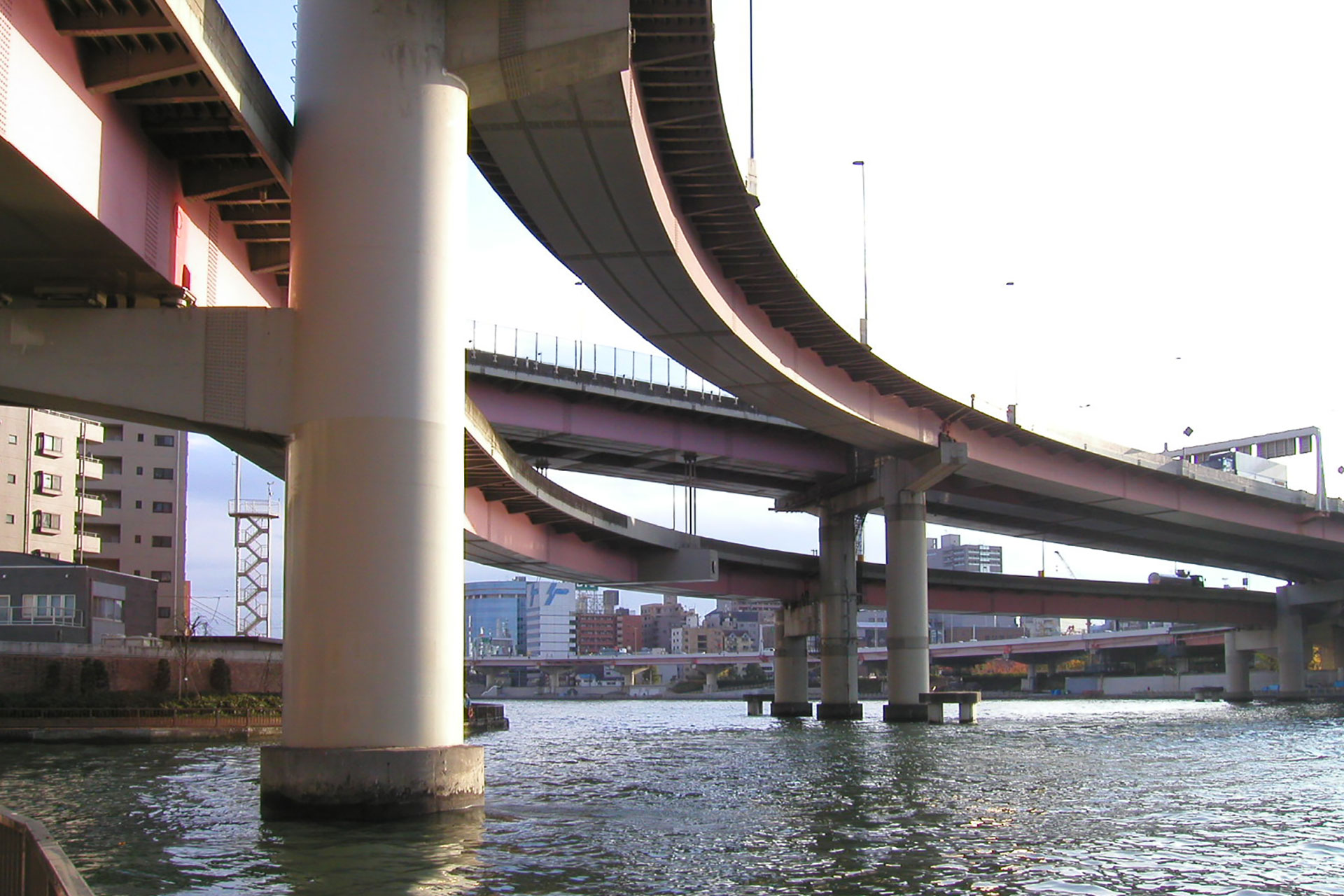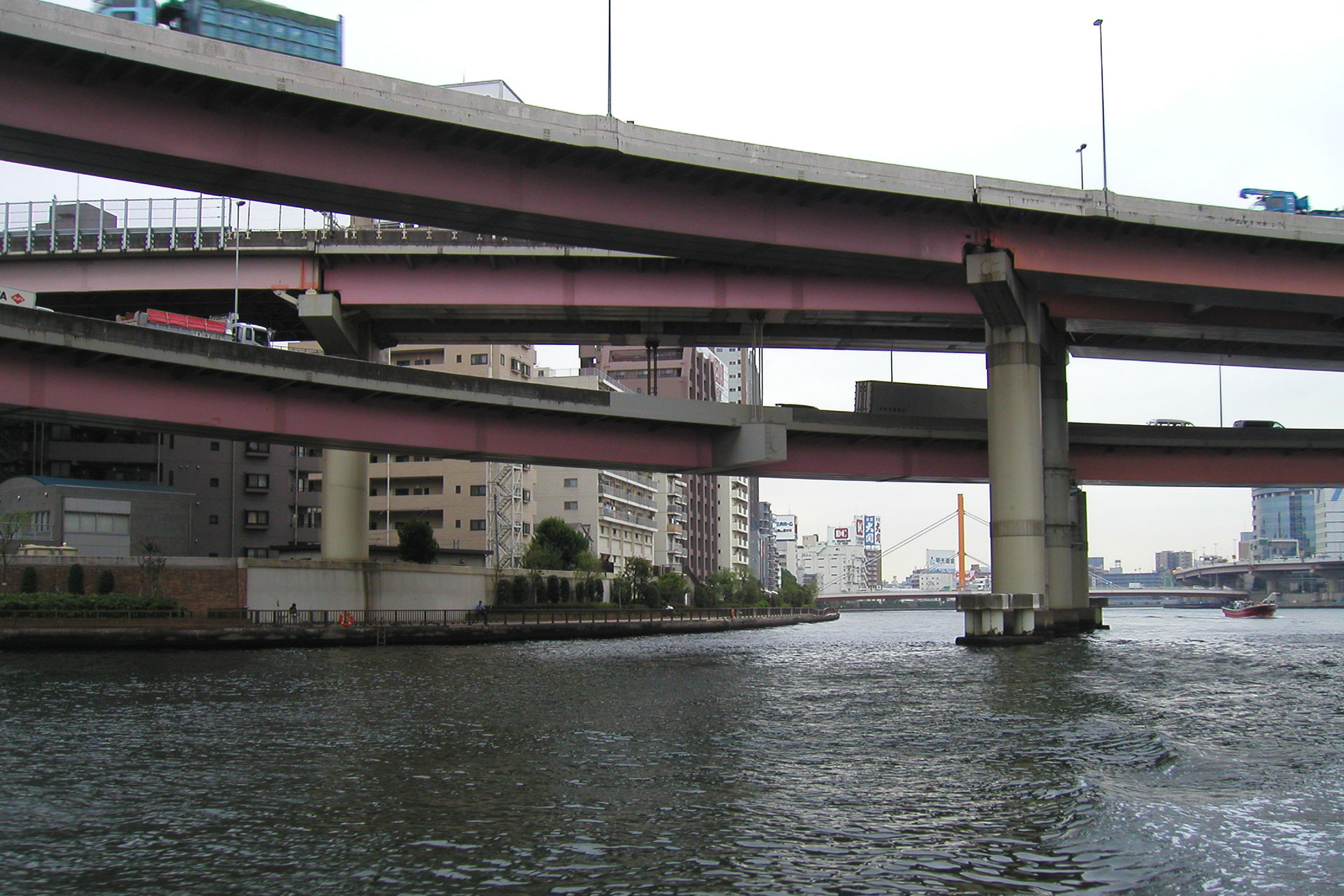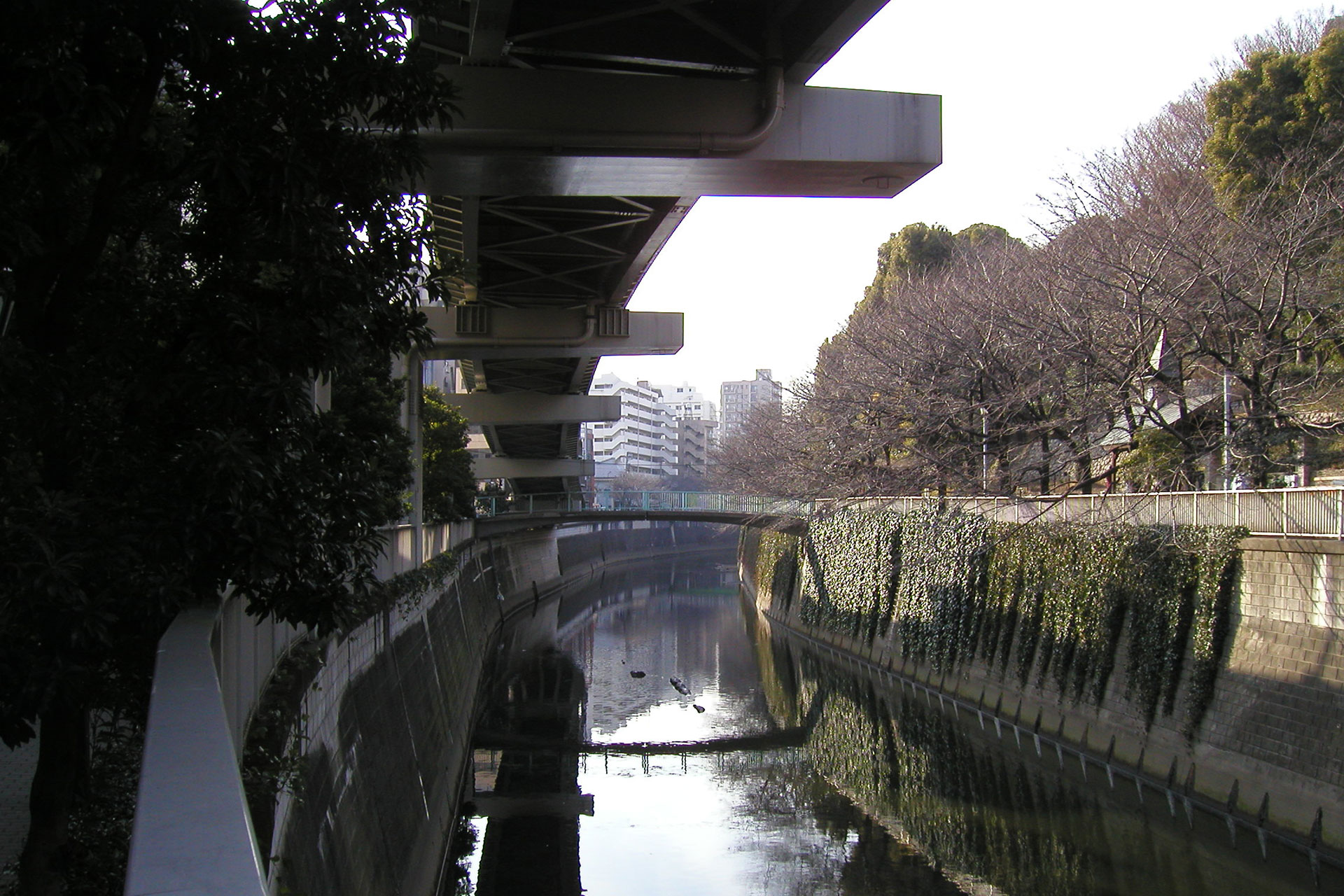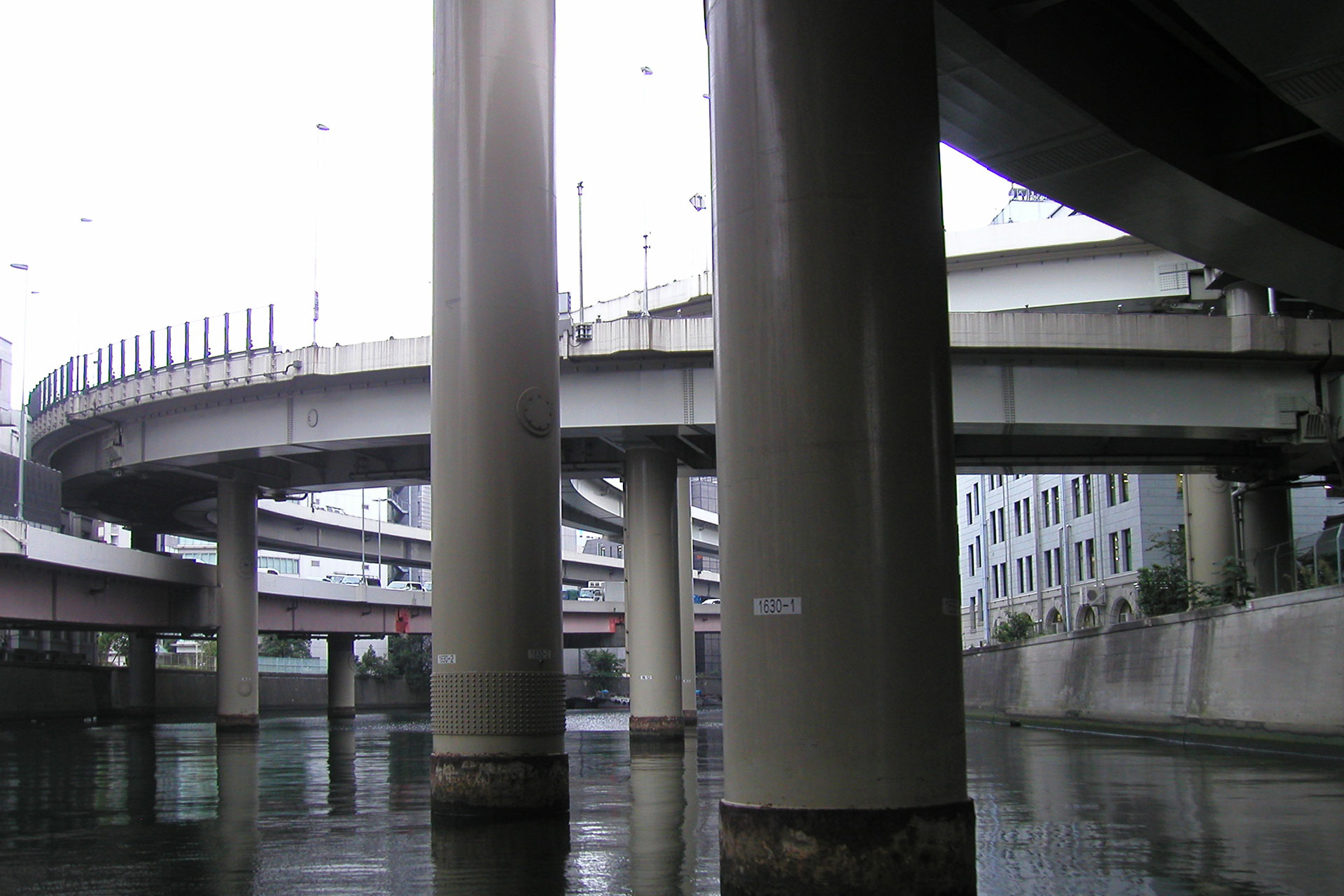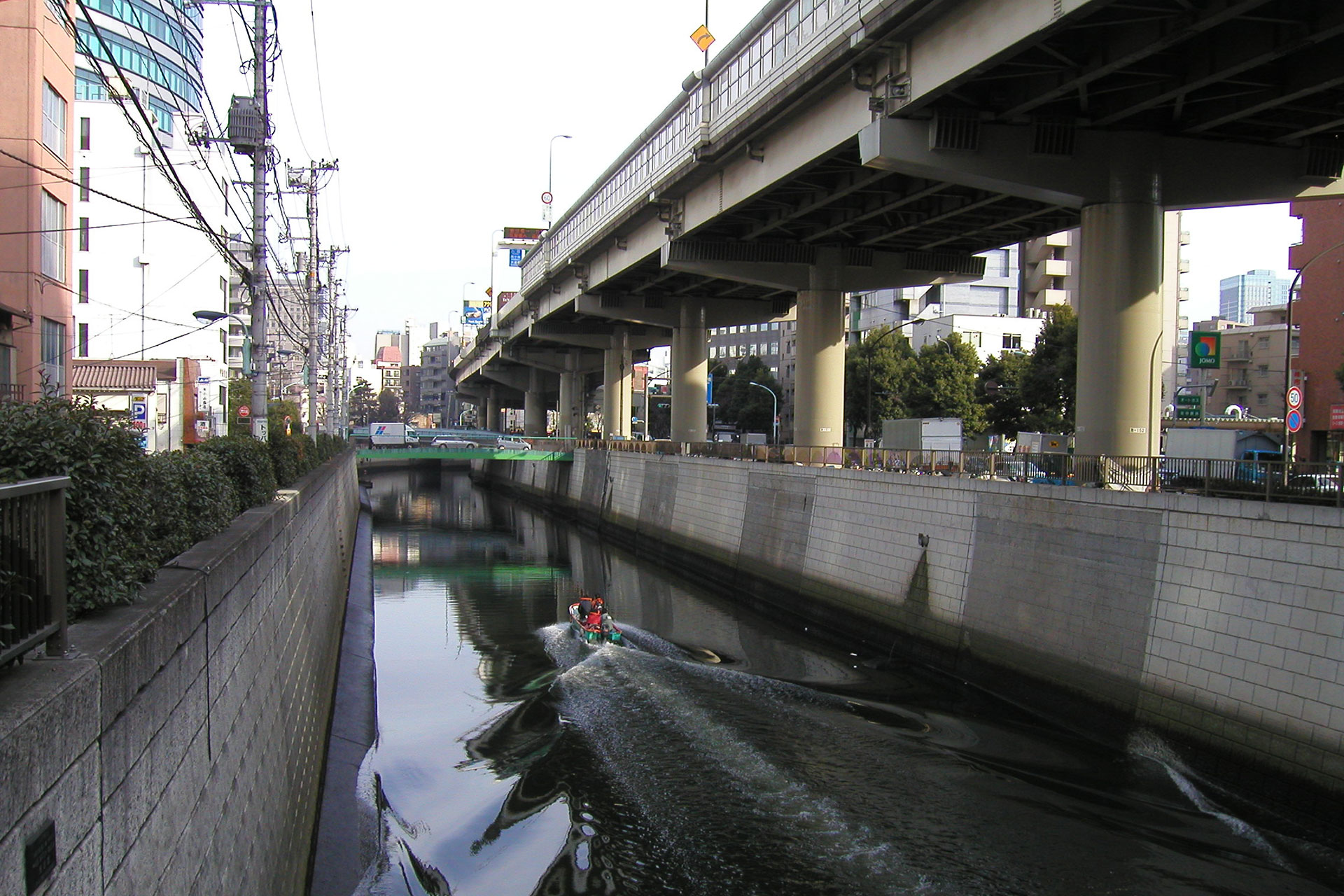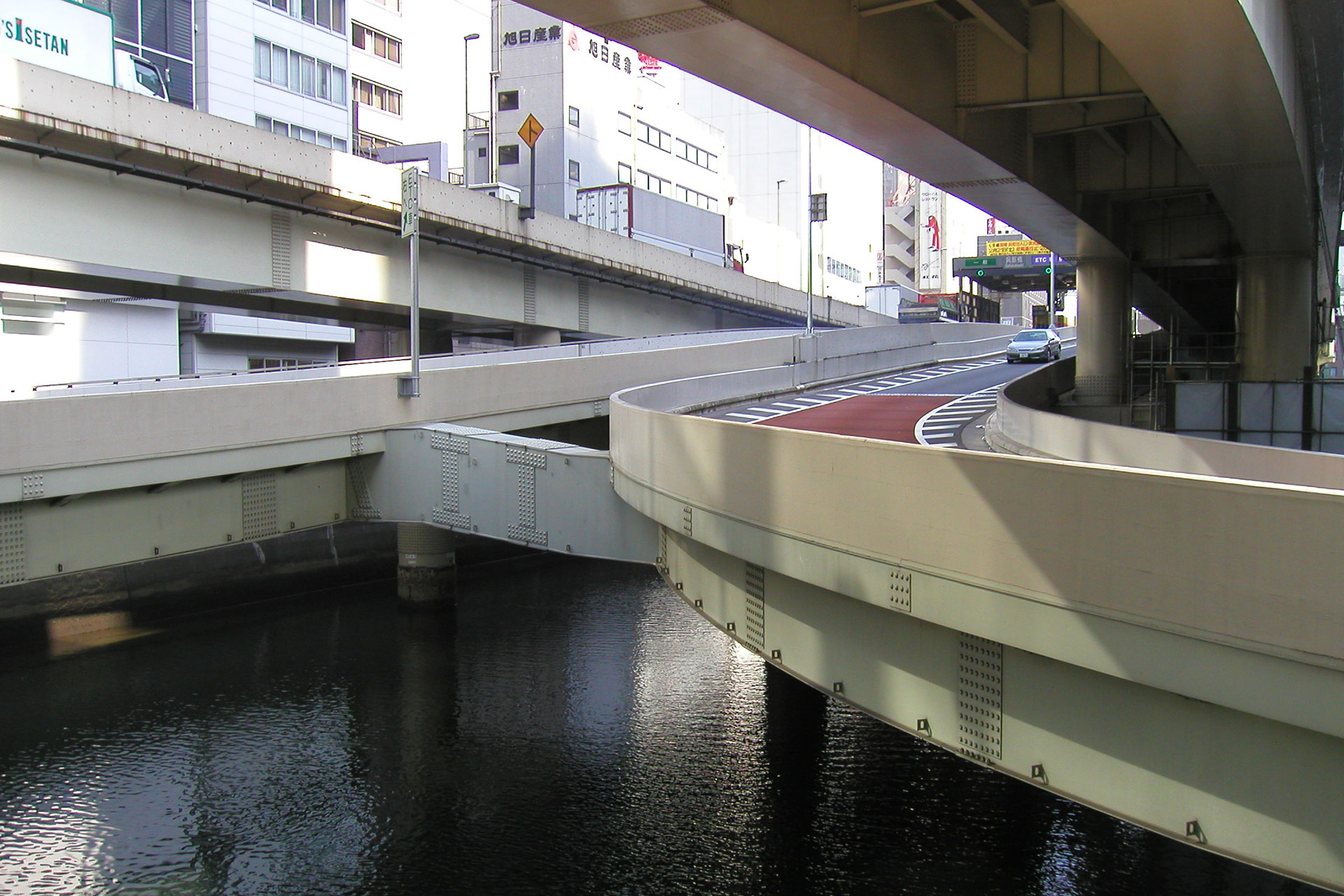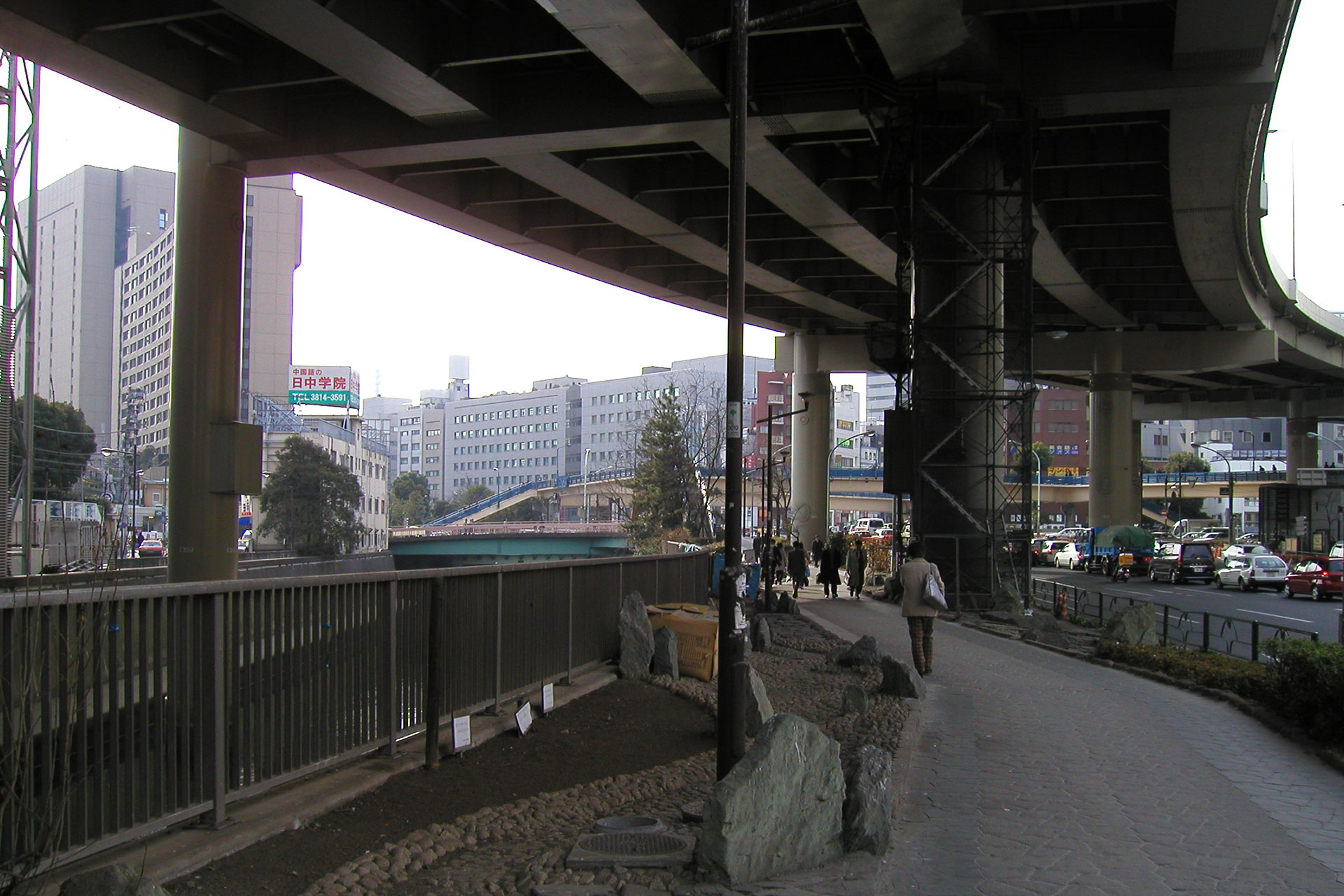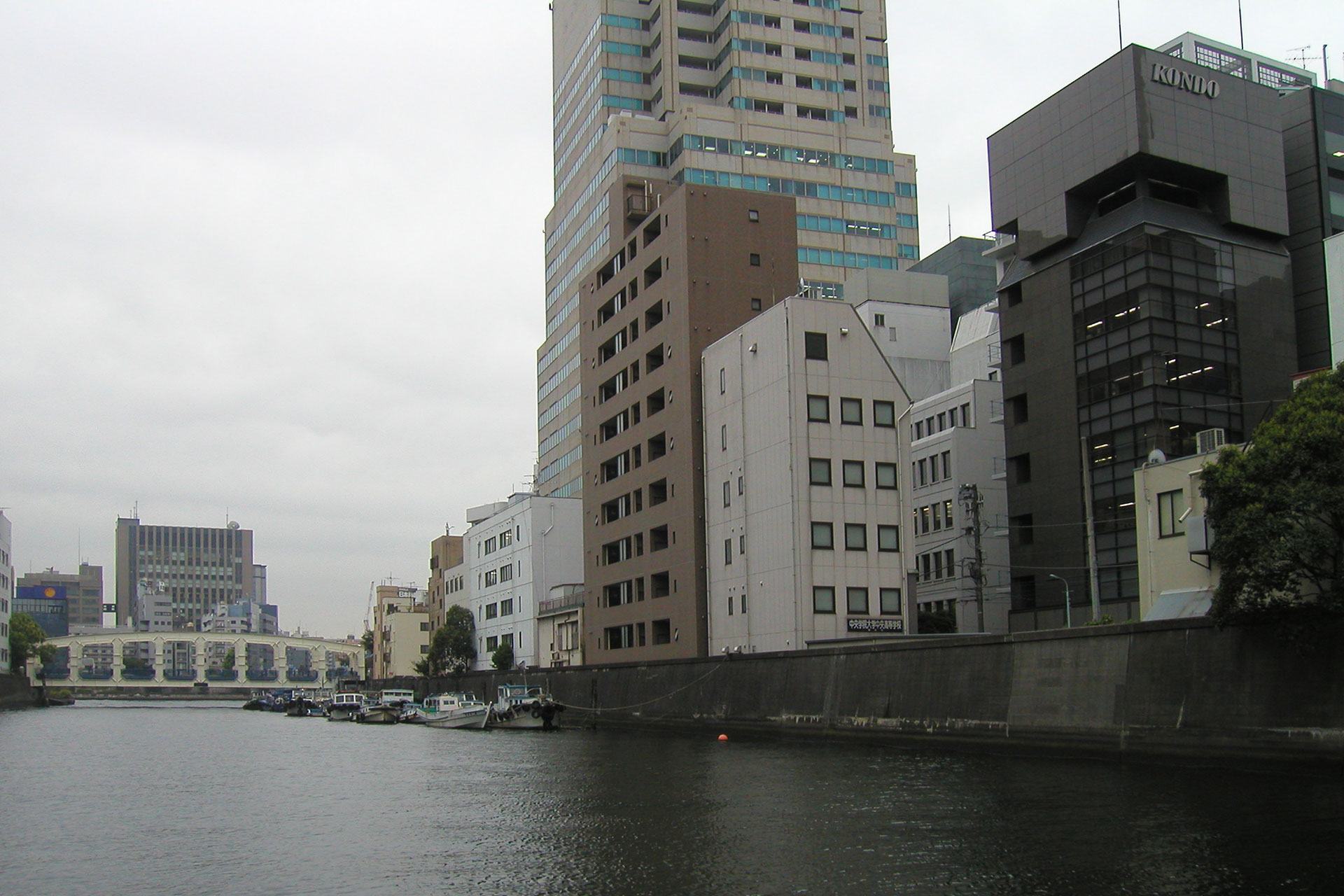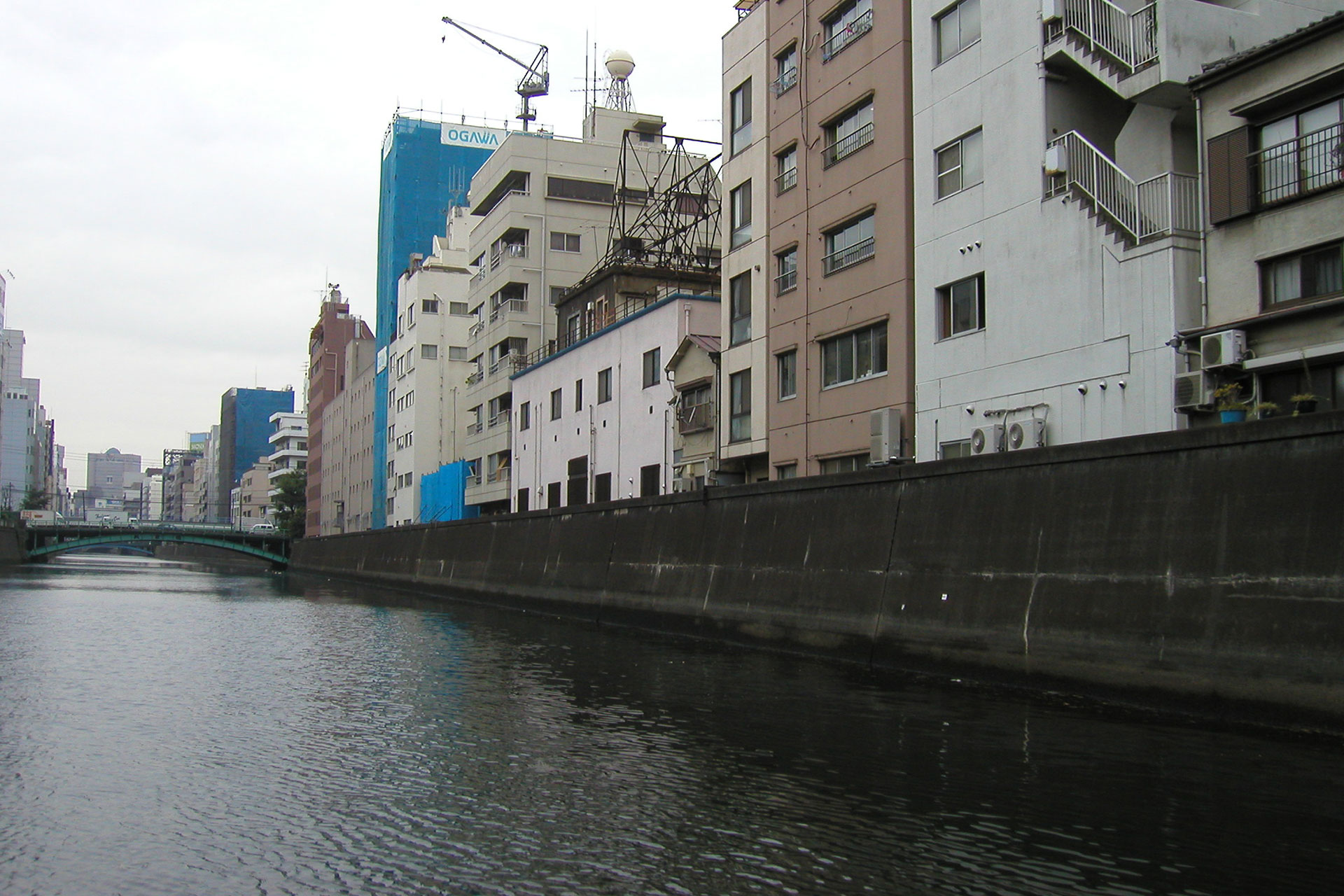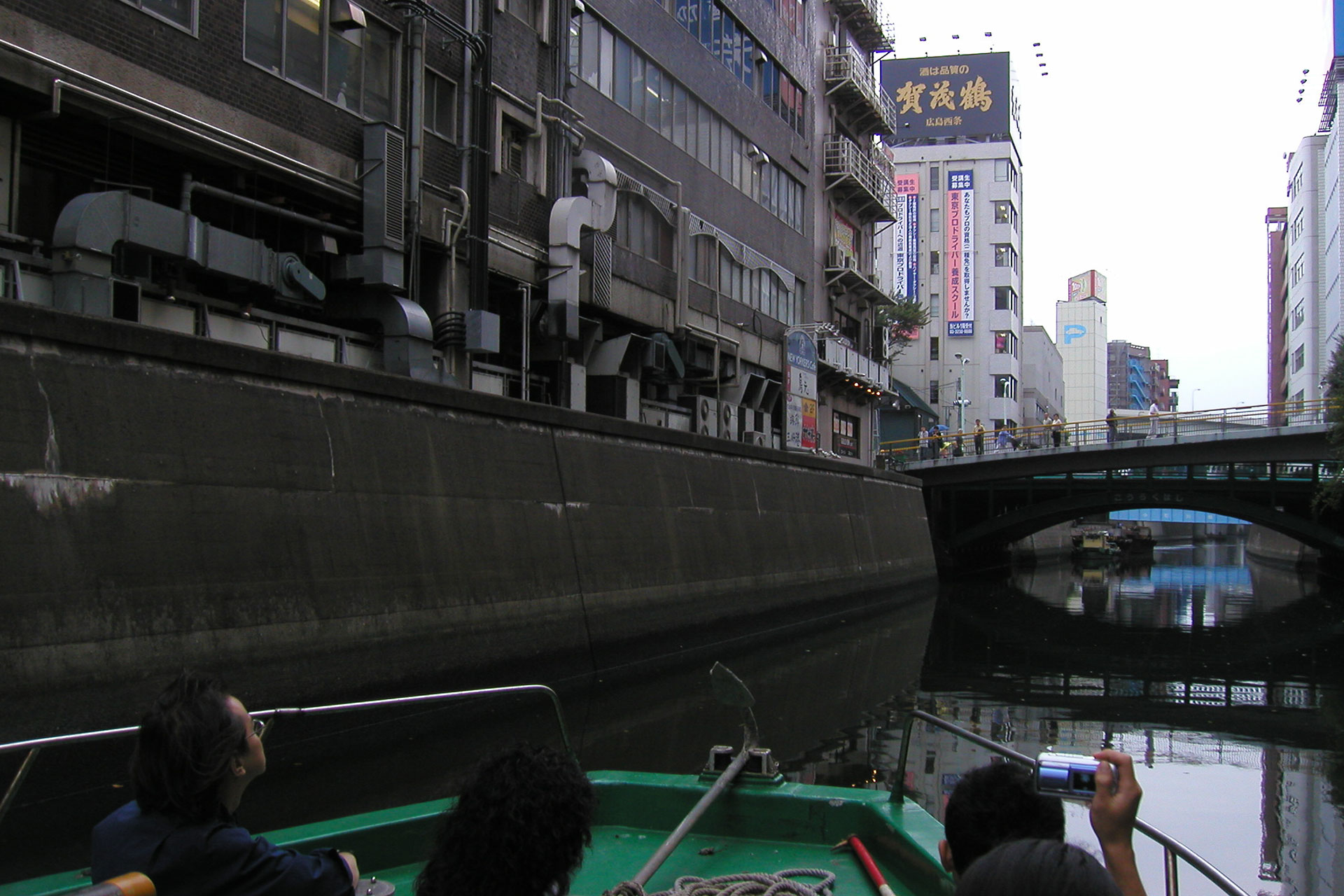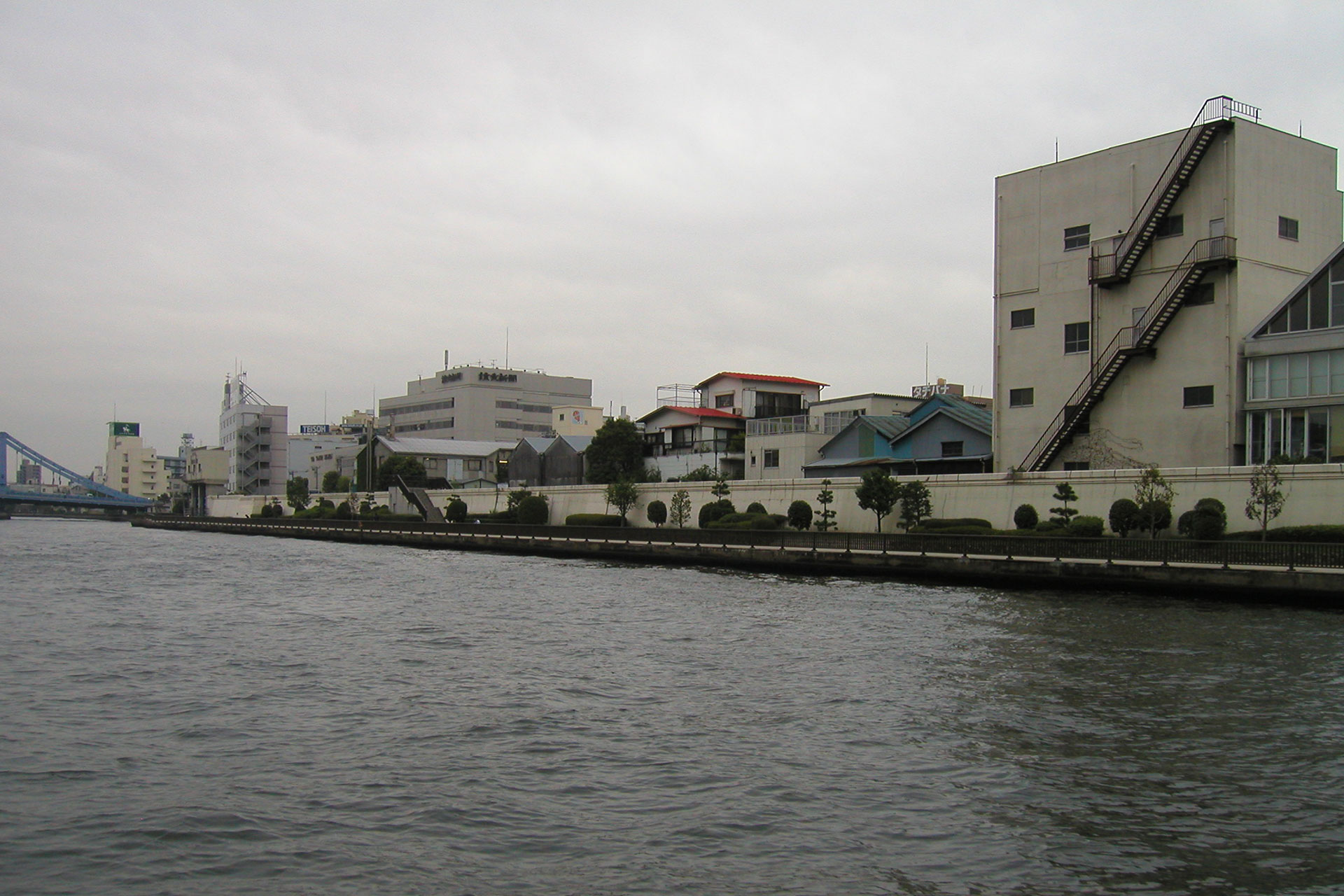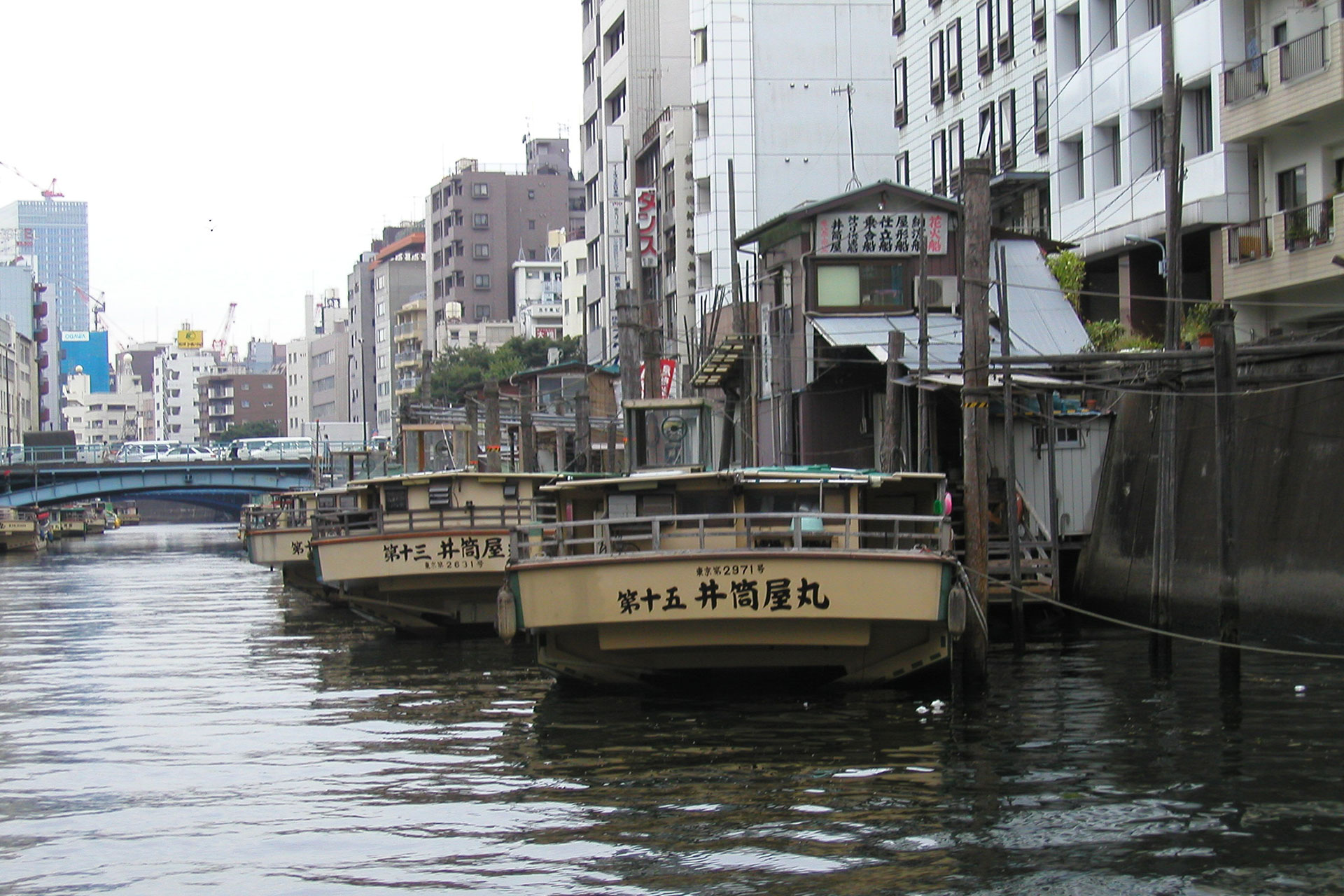Tokyo Network
Since the Meiji period, many factories have been built beside rivers as a result of the emphasis on convenience.
In the modern era since the beginning of the Meiji period, the importance of rivers and their surrounding spaces in urban spaces has gradually declined.
It can be said that rivers have been “treated as a nuisance.”
During the period of rapid economic growth after the war, the Sumida River and other rivers in major metropolitan areas became polluted with various domestic wastewater and wastewater from factories.
And the river is treated like a gutter. Furthermore, the Metropolitan Expressway was built over the river.
It was built at a rapid pace before the Tokyo Olympics.
In Tokyo, rivers are completely behind the city and are separated from the front city space.
From the 1970s, sewage systems began to be developed at a rapid pace, and rivers were rapidly purified.
The sewage network can be thought of as Tokyo’s “background network”.
Rivers are the “front network” and sewage is the “back network”. Water and sewage are of paramount importance to building a city.
The sewage system, which is the “background network”, is a very advanced city in Tokyo.
When the river space is revived, Tokyo will become a complete city.
Tokyo Network Canal Water
Photo : Yoshitaka Uchino
DATA
- Category:
Urban
- Type:
Research, City plan
- Location:
Tokyo
- Team:
YDS
- Size:
-
- Status:
Completed
